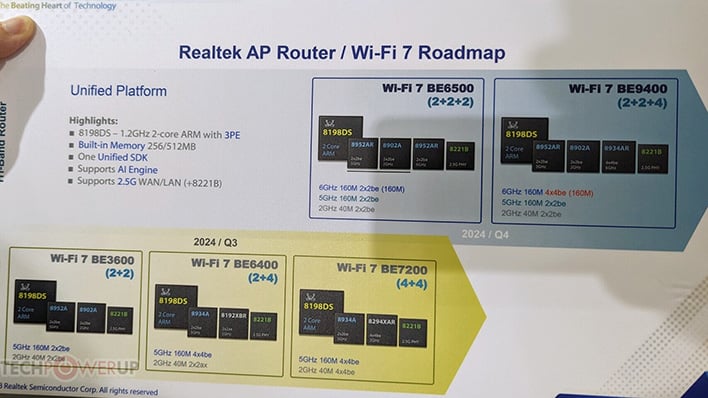Realtek's Wi-Fi 7 Speed Demo At Computex Makes Your 1Gbps LAN Port Look Slow

Realtek did provide a roadmap of its future Wi-Fi 7 routers, with specs featuring 2.5G wired networking, and SKUs featuring up to eight antennas in total, with four dedicated to the Wi-Fi 6 band entirely. If everything goes to plan, Realtek will be launching three new routers in 2024 Q3, including the BE3600, BE6400, and BE 7200, and two more in Q4 known as the BE 6500 and BE 9400. The former three are lower-end SKUs supporting only 2GHz and 5GHz bands, while the latter two will support the full suite of Wi-Fi 7 bands including 2GHz, 5GHz, and 6GHz.
Wi-Fi 7 is a new wireless standard that is set to succeed Wi-Fi 6E later this year. Wi-Fi 7 will provide a substantial leap in wireless bandwidth over its predecessors by more effectively utilizing the frequencies Wi-Fi 6E already possesses. The cornerstone of Wi-Fi 7 technology is an enhanced version of Multi-Link Operation. It allows a router to connect to a device with multiple bands simultaneously instead of just one. This means a single device can use the full bandwidth potential of 2.4GHz, 5GHz, and 6GHz simultaneously in the right conditions.
This is just one of many new features supported in Wi-Fi 7. Others include greater channel widths, spatial streams, and more to increase performance and decrease latency compared to previous standards. For more details be sure to check out some of our previous Wi-Fi 7 coverage here.
Images courtesy of TechPowerUp

